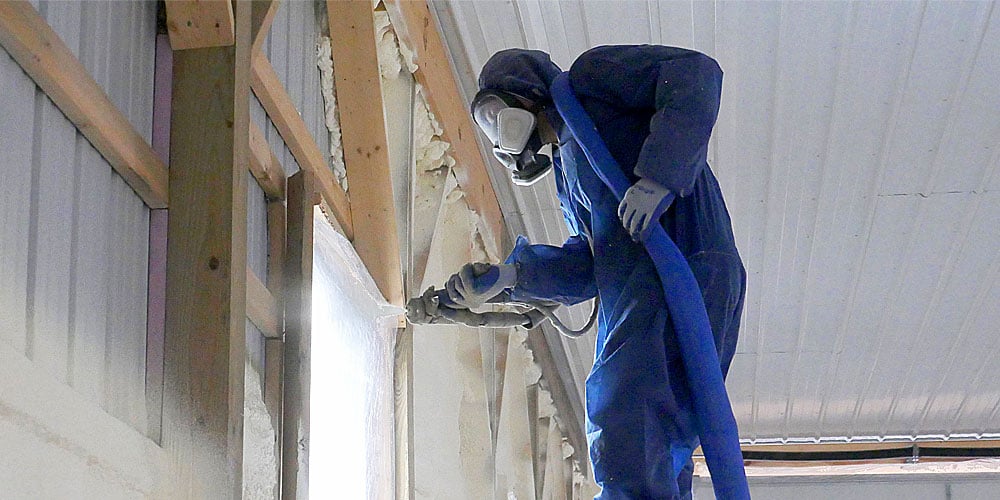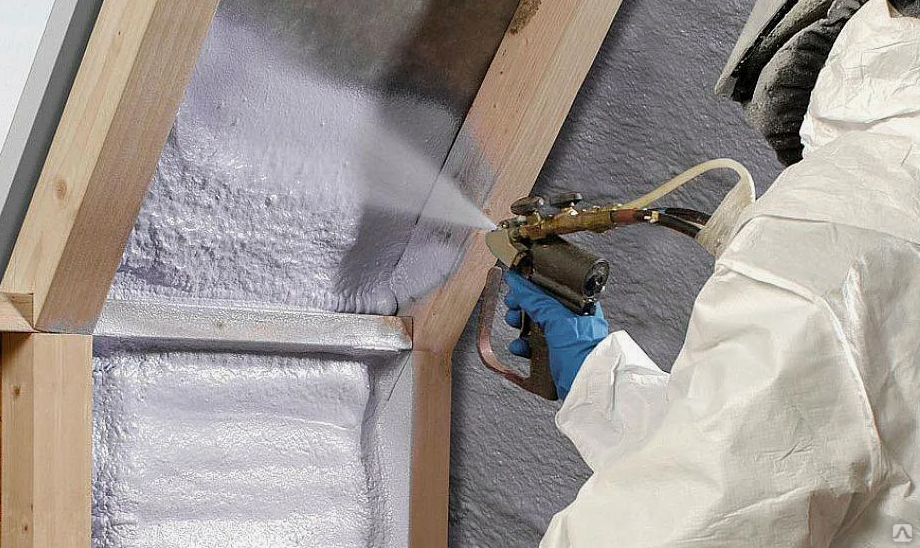The Willmar, MN Homeowner’s Guide to Preventing Costly Moisture and Mold Damage
This guide explains how Willmar property owners can protect homes and commercial spaces from moisture damage.

Moisture is one of the biggest threats to homes and commercial buildings in Minnesota. A small leak or poorly insulated wall can quickly lead to mold growth, structural damage, and expensive repairs. Residents and property managers in Willmar face an even tougher challenge with long winters, humid summers, and sudden temperature swings that push buildings to their limits.
This guide explains how Willmar property owners can protect homes and commercial spaces from moisture damage, how insulation plays a role in long-term prevention, and which solutions deliver the most reliable results. You’ll also see how an expert spray foam insulation contractor in Willmar, MN provides trusted methods to help maintain dry, healthy, and efficient spaces.
The article is structured into:
- How Moisture and Mold Damage Develop in Willmar Properties
- The Role of Spray Foam in Moisture Prevention
- Comparing Insulation Materials for Mold Resistance
- Warning Signs of Moisture Issues in Homes and Buildings
- Moisture Solutions for Residential, Commercial, and Agricultural Properties
- Common Questions from Willmar Property Owners
- Steps Toward Lasting Protection Against Moisture and Mold
How Moisture and Mold Damage Develop in Willmar Properties
Moisture enters buildings in two ways: water intrusion and air movement. Both are intensified in Minnesota’s climate, where snow melt, ice dams, and humid summers test building envelopes. Once inside, moisture lingers in insulation, wall cavities, and basements, creating the perfect environment for mold.
Key Factors That Contribute to Moisture Damage
- Temperature Swings: Warm indoor air collides with cold outdoor surfaces, creating condensation.
- Air Leaks: Unsealed gaps in attics, crawl spaces, and basements let humid air infiltrate.
- Porous Insulation: Fiberglass and cellulose absorb and hold moisture, reducing effectiveness.
- Poor Ventilation: Without proper airflow, damp areas never fully dry.
When left unchecked, mold can spread across drywall, wood framing, and HVAC systems—posing health risks and lowering property value.
The Role of Spray Foam in Moisture Prevention
Spray foam insulation solves two critical issues at once: it resists water absorption and creates an airtight seal that blocks humid air from entering. This dual protection makes it highly effective for Willmar homes and commercial properties exposed to harsh seasonal changes.
Closed-cell spray foam is especially effective for moisture defense. Its dense structure resists water intrusion, strengthens building walls, and stops air leaks in one application. Blown-in attic insulation can also be combined to reinforce coverage in large roof spaces, while intumescent paint adds a protective layer in commercial applications.

Why Spray Foam Outperforms Traditional Materials
- Acts as both insulation and air barrier
- Prevents condensation inside wall cavities
- Protects wood framing from long-term moisture exposure
- Reduces the risk of mold spores spreading indoors
Foam Worx Spray Foam Insulation applies advanced spray foam solutions that keep structures dry, stable, and energy-efficient year after year.
Comparing Insulation Materials for Mold Resistance
Not all insulation materials resist mold growth. Fiberglass and cellulose absorb moisture, which lowers performance and encourages decay. Spray foam resists both water and air penetration, giving it a clear advantage.
| Feature | Spray Foam | Fiberglass Batts | Cellulose |
|---|---|---|---|
| Mold Resistance | High | Low | Low |
| Water Absorption | Minimal | Absorbs Easily | Absorbs Easily |
| Air Barrier | Excellent | Poor | Moderate |
| Longevity | 20+ years | 10–15 years | 10–15 years |
| Structural Support | Yes (closed-cell) | No | No |
Choosing insulation is not only about R-value. For properties in Willmar, mold prevention and durability are equally important considerations.
Warning Signs of Moisture Issues in Homes and Buildings
Property owners often miss early moisture warnings until visible mold appears. Knowing what to look for can prevent expensive remediation later.
Signs Moisture Is Affecting Your Property
- Musty odors that don’t go away
- Condensation on windows and walls
- Ice dams forming on roofs during winter
- Rooms with uneven temperatures
- Spiking energy bills despite consistent HVAC use
- Dark stains or discoloration on ceilings or drywall
Local spray foam professionals can inspect these problem areas and recommend targeted insulation improvements before mold spreads.
Moisture Solutions for Residential, Commercial, and Agricultural Properties
Moisture prevention looks different depending on the type of property. From family homes to barns and commercial buildings, insulation plays a critical role.
Residential Homes
Spray foam professionals use closed-cell spray foam in basements, attics, and wall cavities to keep conditioned air inside while blocking outside humidity. Blown-in attic insulation can complement spray foam for broad coverage.
Commercial Properties
Intumescent paint and high-performance spray foam help protect structures, lower energy costs, and maintain clean indoor air quality. Trusted insulation experts recommend these solutions for offices, retail, and industrial spaces.
Agricultural Buildings
Barns, workshops, and storage facilities in Willmar benefit from spray foam’s moisture resistance and durability. Expert foam teams apply closed-cell spray foam to protect equipment, livestock, and feed from mold-related issues.
Local insulation experts help property owners select the right solution based on building type, moisture exposure, and long-term energy goals.

Common Questions from Willmar Property Owners
Does spray foam stop mold from growing?
Spray foam doesn’t support mold growth because it doesn’t absorb water. By sealing gaps and reducing condensation, it creates an environment where mold struggles to develop.
How long does spray foam last in Minnesota homes?
High-quality spray foam insulation remains effective for decades without shifting, settling, or losing performance, even in extreme temperature swings.
Is spray foam safe for older homes in Willmar?
Yes. Spray foam consultants inspect existing structures before application to confirm compatibility. Many older homes see dramatic comfort and efficiency improvements.
Can insulation improvements lower utility bills?
Yes. By reducing energy loss through gaps and moisture-damaged areas, insulation upgrades help HVAC systems work more efficiently, lowering monthly energy costs.
Steps Toward Lasting Protection Against Moisture and Mold
Moisture damage is preventable with the right insulation strategy. Spray foam insulation stands out as a proven method to keep Willmar homes, commercial properties, and agricultural buildings dry and energy-efficient.
Ready to Achieve Energy-Efficient Indoor Performance?
Effective insulation protects buildings from mold, stabilizes comfort, and reduces energy costs. Foam Worx Spray Foam Insulation provides advanced spray foam solutions, blown-in attic insulation, and intumescent paint to support long-lasting performance for residential and commercial spaces. For reliable insulation guidance in Willmar, call (507) 407-0678 or email foamworxinsulation@yahoo.com.
FAQs
How does spray foam improve moisture control compared to fiberglass?
Spray foam seals gaps and resists water absorption, while fiberglass allows humid air and moisture to pass through, leading to condensation and mold growth.
Can spray foam improve indoor air quality?
Yes. By blocking moisture, dust, and outdoor pollutants, spray foam reduces allergens and mold spores inside the home.
What areas of a property benefit most from spray foam in Willmar?
Attics, basements, wall cavities, crawl spaces, and commercial roofing are the most effective areas for moisture and mold prevention.
Do local spray foam professionals handle both residential and commercial projects?
Yes. Insulation leaders in Willmar provide solutions for homes, offices, barns, and warehouses to protect against moisture and energy loss.
What’s the difference between open-cell and closed-cell spray foam for mold prevention?
Closed-cell spray foam offers stronger moisture resistance and structural strength, making it the top choice for mold prevention in Minnesota.
Reviewer: Jacob Wright has 6 years of experience in spray foam insulation. He reviewed this content and made sure it focused on the real decisions small business owners deal with every day.